Bored of your 'board? Stomp this way for the must-have new guitar effects pedals of 2024
GEAR EXPO 2024: The pedals you need to try this year, from psychedelic to out-of-this-world
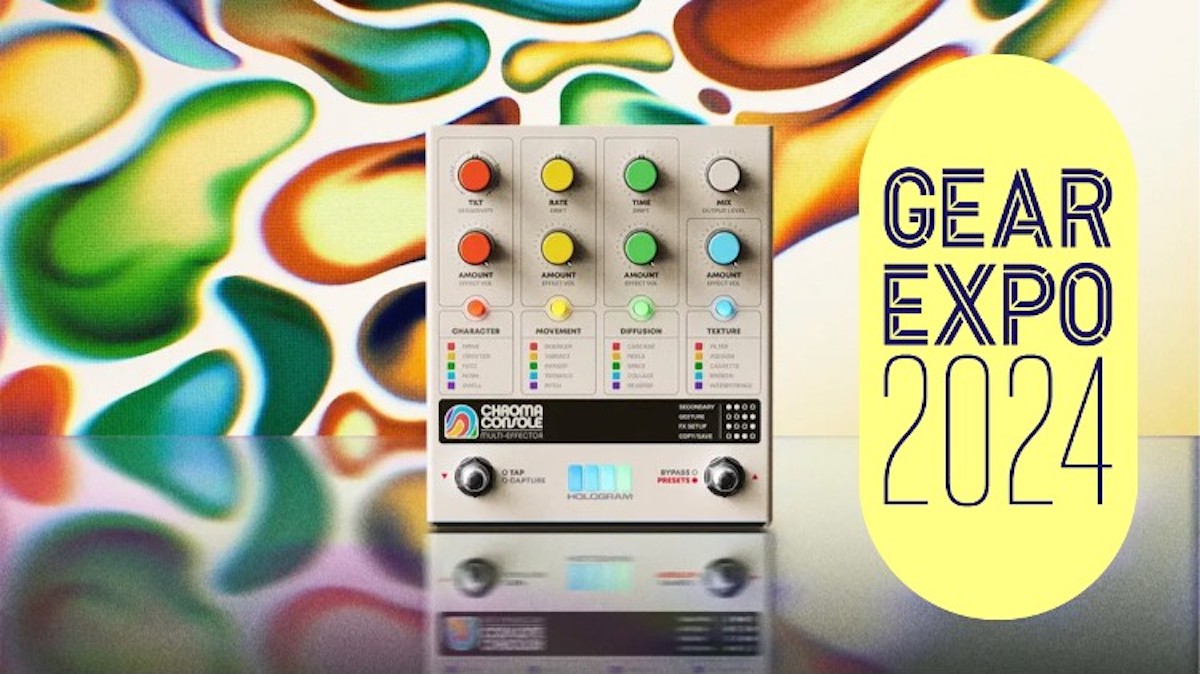
GEAR EXPO 2024: If you need to spice up your guitar tone, you really have come to the right place. At this year's NAMM show there were plenty of amazing new stompboxes announced, and since the show there have been even more new arrivals. We've chosen the best – with models from Walrus Audio, Gamechanger Audio, Donner, JHS and many more, including the brand new POD Express Guitar and Bass from Line 6.
See what you could be filling your pedal boards with this year. Will it be a psychedelic phaser, a multi-effect backed by Jack White, an updated Zonk Machine, or an IKEA-style build-it-yourself overdrive. Or maybe even one of each?
Walrus Audio Meraki delay
Walrus Audio's new Meraki Stereo Analog Delay is actually not quite that 'new', as it was available as a Black Friday special, but now takes a regular spot in the Walrus line up of effects.
Meraki packs eight MN3005 bucket brigade chips into a circuit that offers up to 1200ms of delay. There are parallel, ping-pong and series delay modes, plus modulation, MIDI control, and quarter note, dotted eighth, and eighth note repeats on offer.
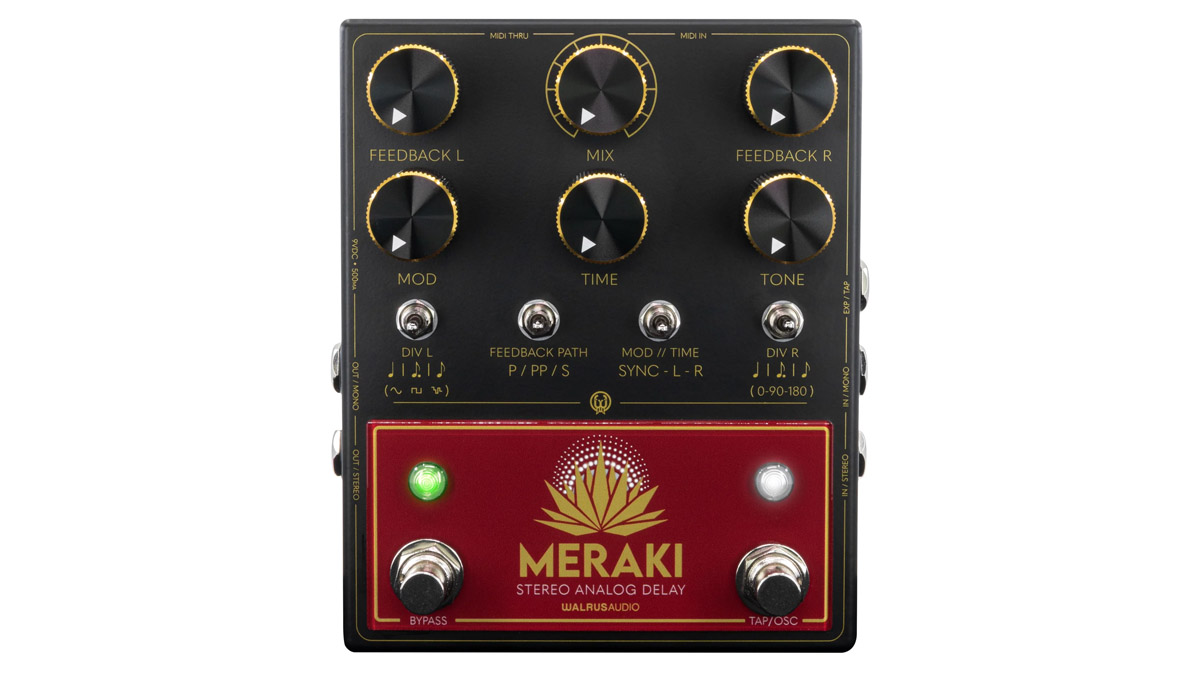
The Meraki has two footswitches, with one used for engaging or bypassing the effect, and the other for setting tap tempo or increasing repeats. You can also put the pedal in full self-oscillating mode for instant Radiohead should you wish.
The pedal has other options for casual repeats and adding space and depth to your tone. There are Feedback controls for both stereo channels and the Tone control can add a tilt EQ to repeats to lighten or darken the sound. A Modulation knob adds chorus/vibrato, while a Time control lets you move between 80 and 1200ms.
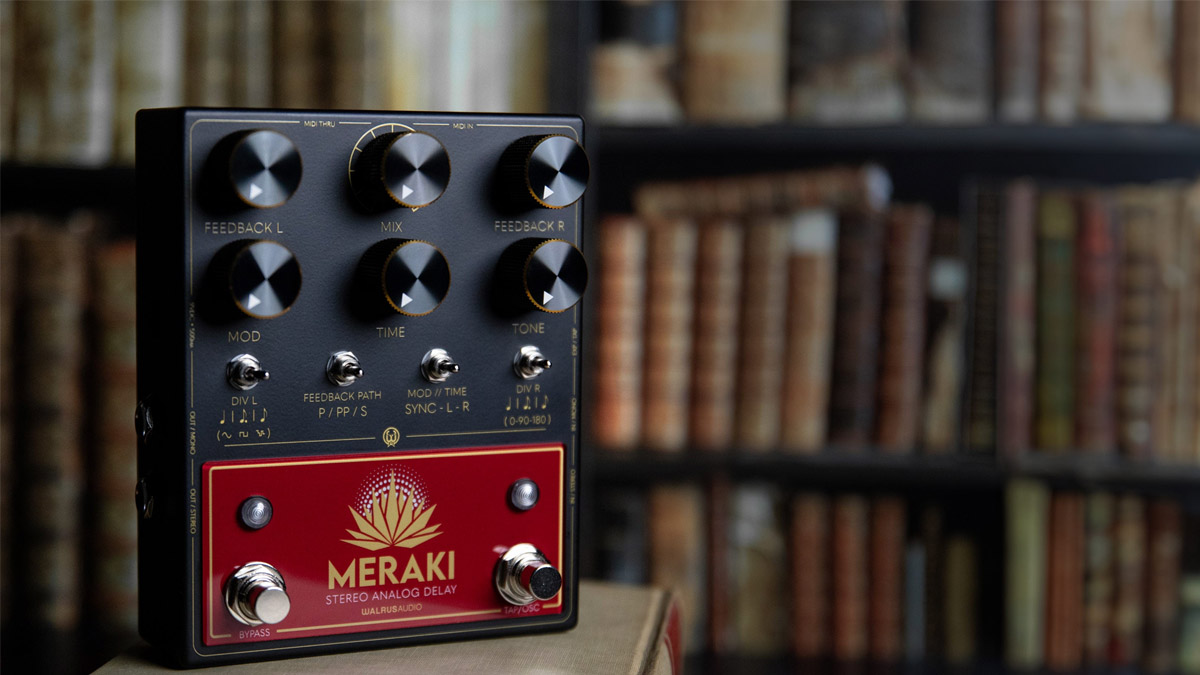
Each of the two channels features its own toggle selector switch for tap divisions, and there are switches for feedback and channel sync.
Get the MusicRadar Newsletter
Want all the hottest music and gear news, reviews, deals, features and more, direct to your inbox? Sign up here.
The Meraki Stereo Analog Delay is available now, and while it's not cheap at $599, it does seem to come packed to the rafters with delay options.
For more information, head on over to Walrus Audio.
Gamechanger Audio MOD Series

Gamechanger Audio is bringing modular synthesis to a pedal near you with its new MOD Series. The stompboxes are stereo Reverb, Delay and Chorus pedals that respond dynamically to your playing
All three pedals have a Mod switch alongside a Bypass. When activated it allows a particular parameter to change as you play, so you might set it to increase the decay time on the reverb as you play higher notes, for example.
More extreme examples include activating fluctuating delay in the higher register, but the MOD Series goes much deeper and this results in those modular synth comparisons. Each pedal has multiple patch bays so the effect parameters and pitch signals can be adjusted and routed in these bays with cables to different combinations within each pedal and one another.
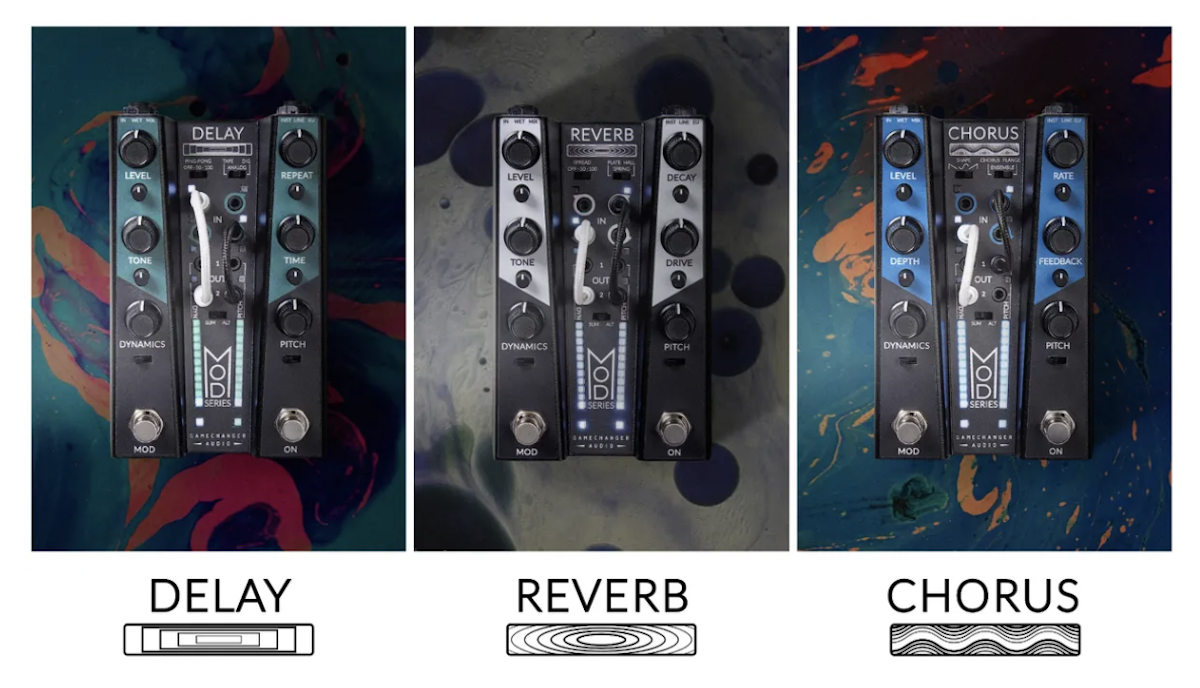
Each of the pedals features different modes, so the Delay has Pristine Digital, Warm Tape and Gritty Analog BBD modes to cover the classic delay bases. The Reverb pedal, meanwhile, has Huge Hall, Vibrant Plate and Twangy Spring modes, and the Chorus has Deep Flange, Lush Chorus & Vibrato and Grand Ensemble options.
The MOD Series Chorus, Delay and Reverb are priced at $299/£269 each and available now from Andertons and Sweetwater.
There's more info at the Gamechanger Audio website.
Donner / Third Man Triple Threat
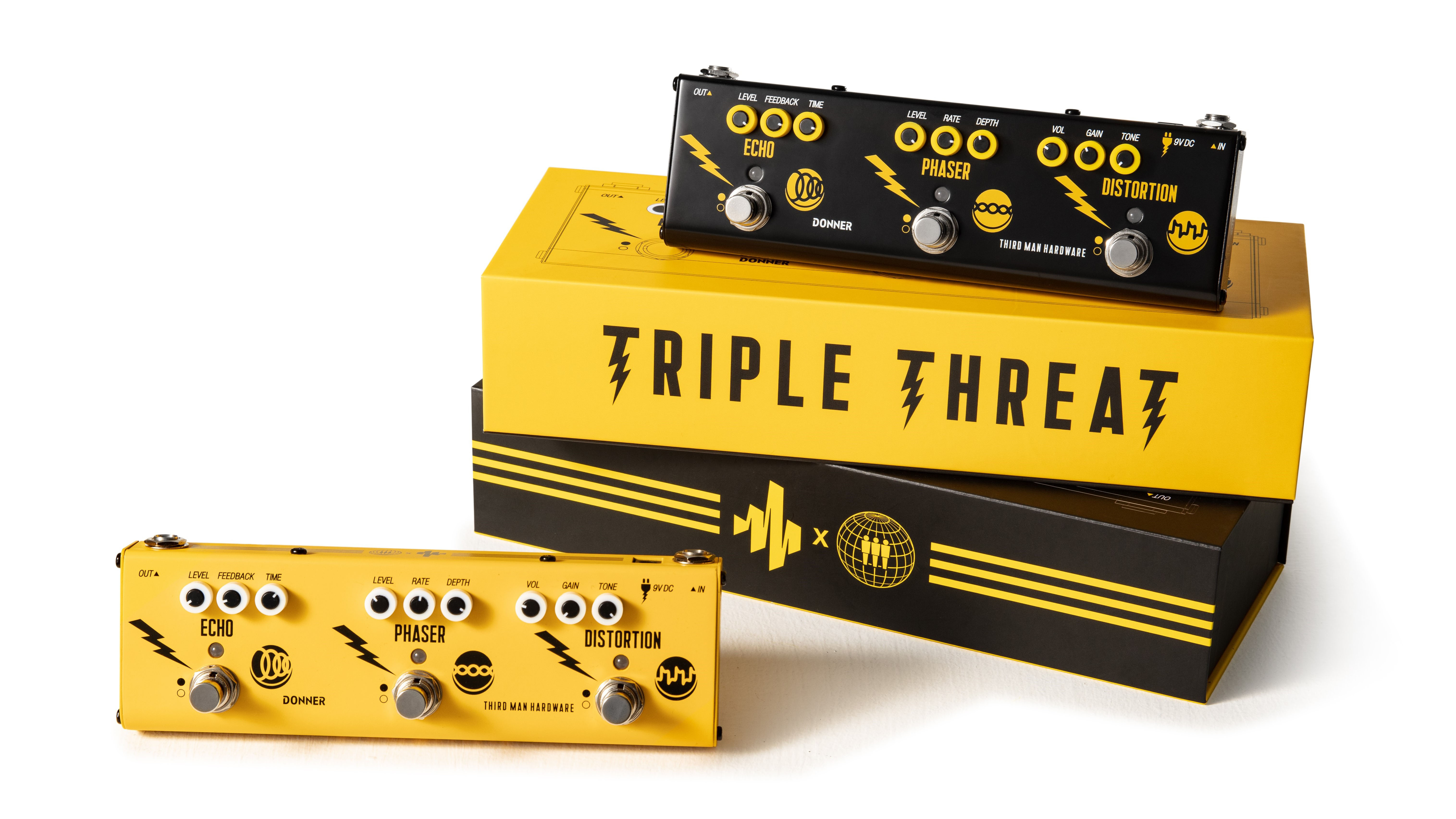
The Triple Threat multi-effects pedal is a new collaboration between Donner Music and Jack White. The $99 pedal combines distortion, echo and phaser in one, and in a design by Third Man Hardware.
Triple Threat is available as a standard black pedal (below), or the limited edition yellow pedal – as shown above – which is slightly more expensive at $129.
The multi-effects pedal has 'wide-range, high gain distortion', and the phaser is an evolution of Donner's Pearl Tremor unit with extra modulation controls. The echo side of Triple Threat is inspired by the Yellow Fall Delay, Donner's first-ever pedal release from 2013.
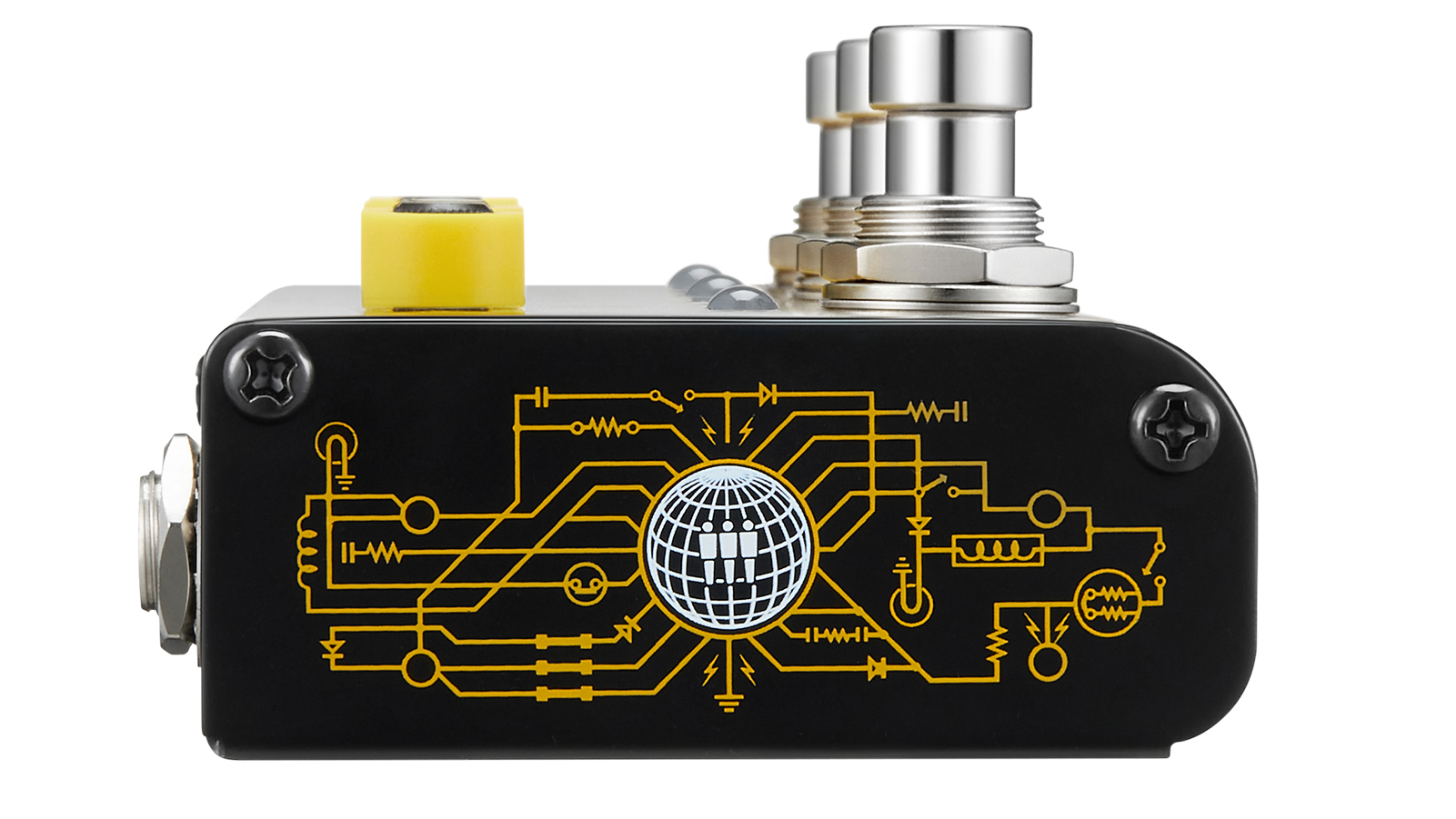
Jack White says he's been wanting to get involved with an affordable multi-effect pedal for a while, and says,“when I approached Donner they knew what I was aiming for and we were able to make something very cool that was also not going to break the bank for a beginning musician.
“All three effects: the distortion, phaser and echo are all heavy duty. I was very impressed with them the first time I plugged into the prototype version that Donner had sent. This set of effects is for all kinds of music, all genres. Maybe not opera though.”
There's more info at the Donner website and you can order Triple Threat direct from the Third Man store.
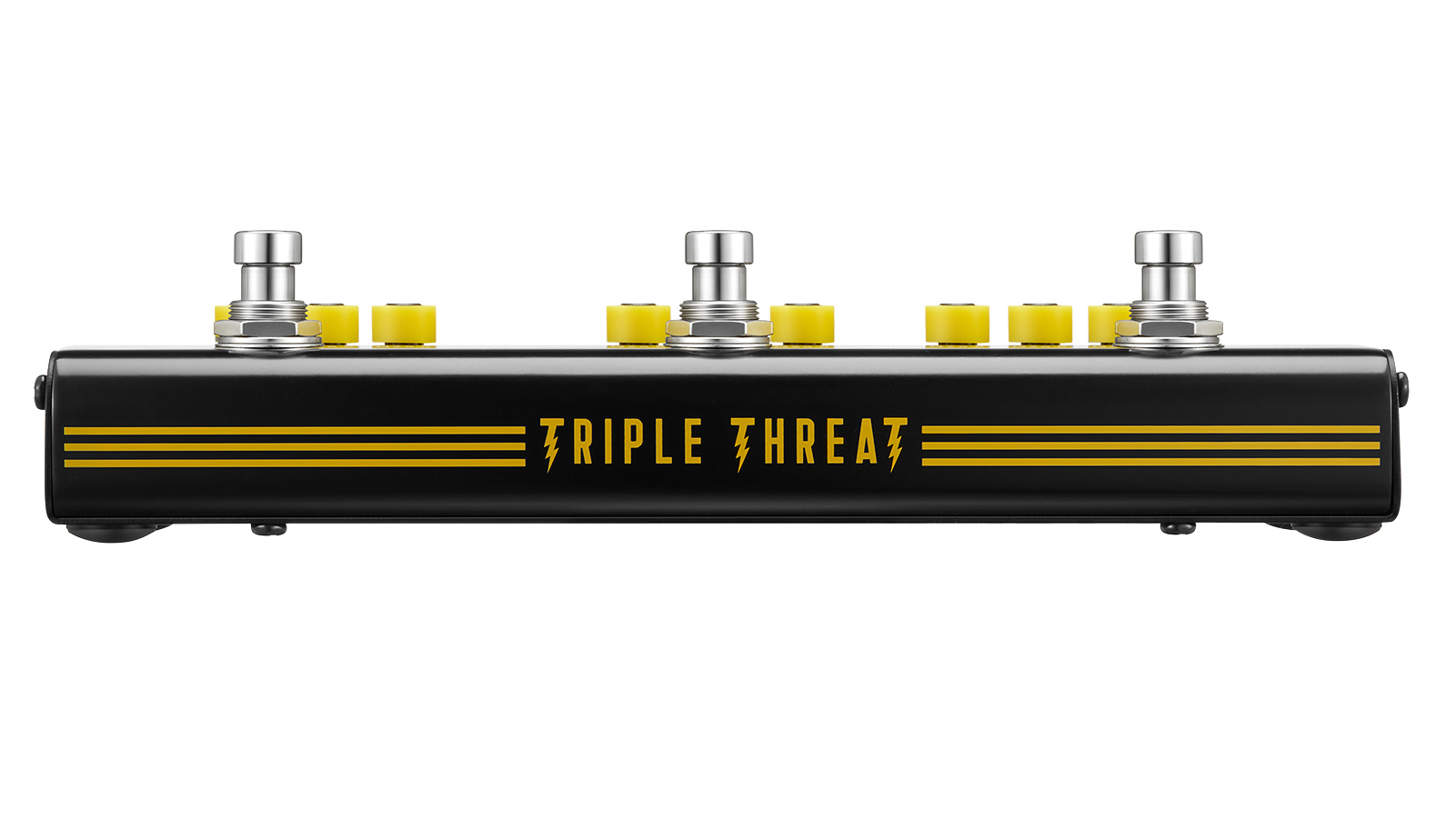
JHS Pedals NOTAKLÖN
The new JHS Pedals NOTAKLÖN is a Klon Centaur-influenced overdrive pedal with an IKEA-style name and approach. It's a $99/£82 pedal kit that you put together yourself. It doesn't require any soldering and ships with 'easy-to-understand' instructions.
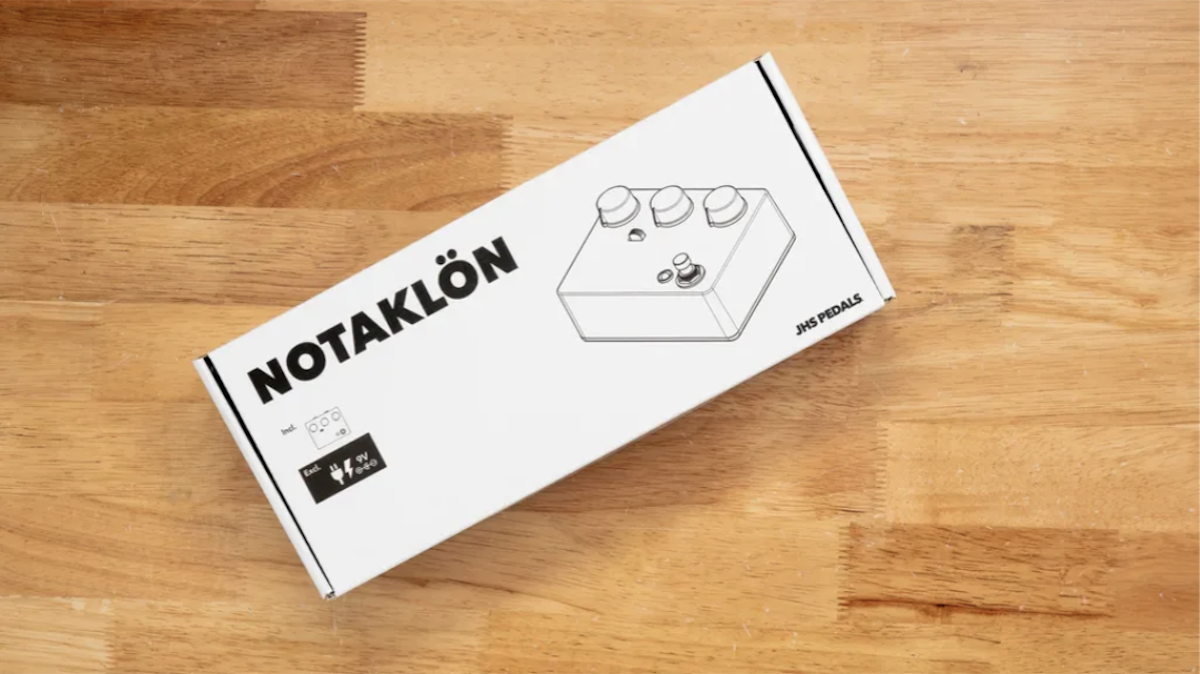
The pedal also features the Scott's Shamrock mod that JHS has implemented on previous KTR pedals that delivers more volume, mids and an additional gain stage. NOTAKLÖN's arrival is partly due to requests for JHS to reissue the replica Klon it produced up to 2012, but this new spin helps keeps costs down.
The first 3,000 units have apparently sold out, but you can preorder one from the next batch at the JHS website here.
Chase Bliss’s Condor HiFi
The new Chase Bliss Condor HiFi is a guitar effects pedal that is part EQ, filter and overdrive pedal. The all-analogue pedal has featured in the Chase Bliss range before, but this version is "new and improved" and features more headroom, higher fidelity and lower noise.
A different clipping character promises "vivid character where you need it and absolute transparency where you don’t”. Condor HiFi also features a drive section to dial in a clean boost, grit, or saturated crunch. A gain section works with the EQ to change the drive character. Apparently, going heavy with the pre-gain bass control really pushes the pedal, and using the post-gain mids/LPF gives your sound “resonant punch”.
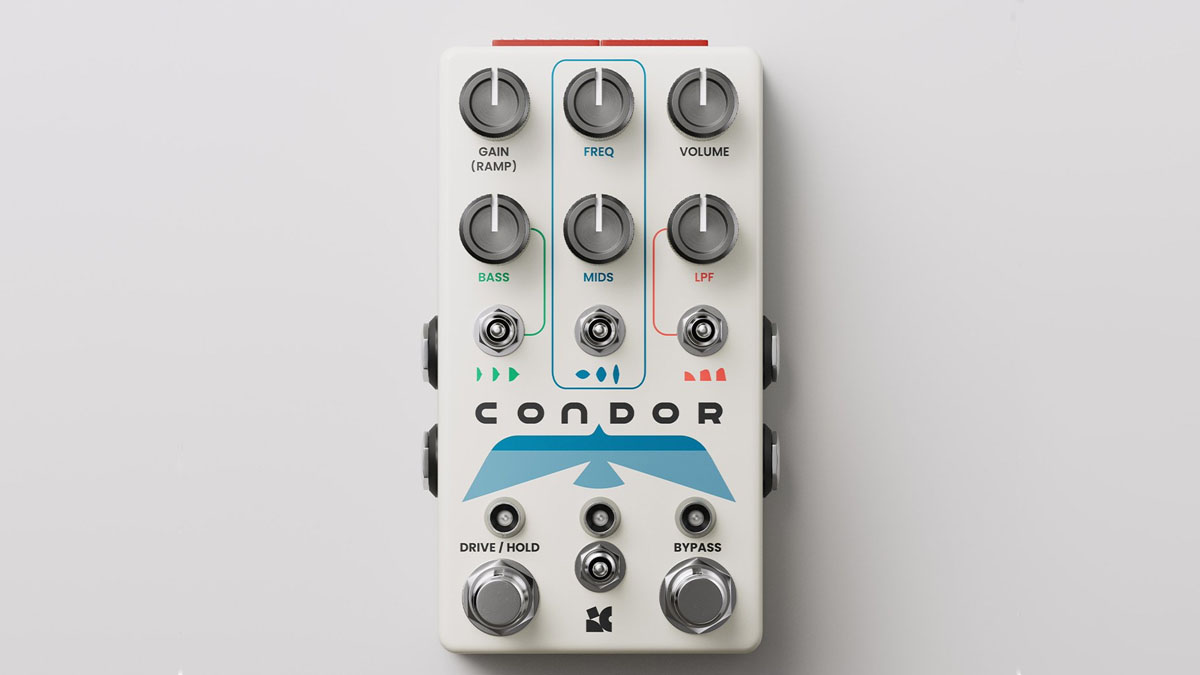
With the EQ section, Condor HiFi splits the frequencies in your signal and applies EQ to shape each band. There's also a Mids option to apply 18dB of boost or cut to your mid range via the Freq knob. A resonant filter adds a unique low-pass filter for further sonic tweakage.
The Condor HiFi is available now for $399 and owners of the original Condor can upgrade for just $49 by sending their units to Chase Bliss. They’ll simply fill the old enclosure with the guts of the new Condor. Clever stuff.
See the Chase Bliss website for more details.
Hologram Electronics Chroma Console
Hologram's Chroma Console is, according to the company, "a flexible multi-effect pedal that takes inspiration from the eccentricity, grit, and lively instability of beloved vintage recording technology".
The pedal has 20 effects split into four modules. Each of these has five stereo effects: Drive, Movement (modulations), Diffusion (time-based) and Texture (filters). Users can change the signal chains and the order of these effects with Chroma Console's colour-coded modules.
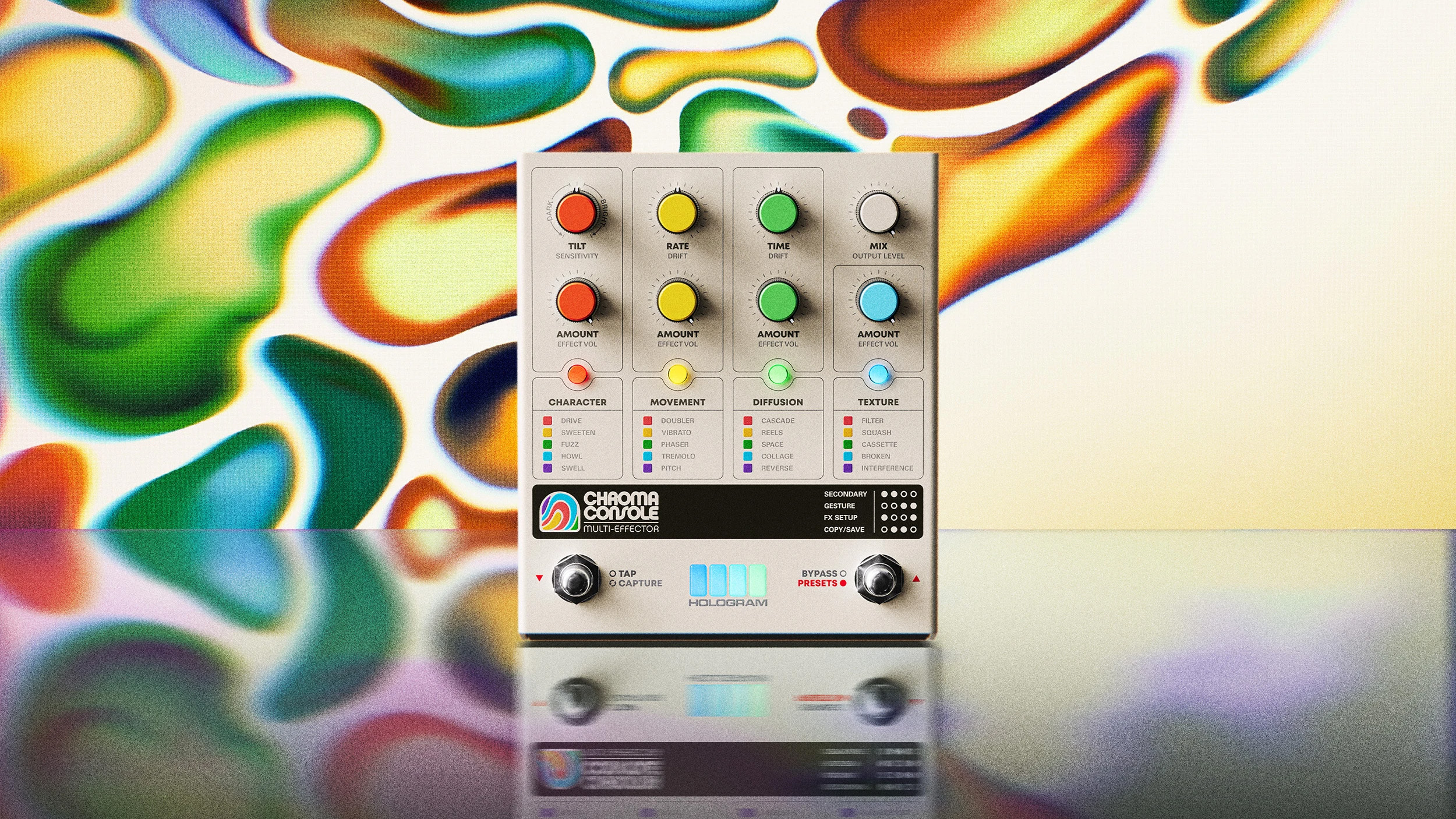
Extra fine-tuning controls include Amount, Time, Tilt, Rate and Mix, depending on the effect category selected.
Additional features include Gesture, a hands-on modulation tool, so users can record and loop knob movements that produce sounds. Capture records short (up to 30 second) sustained loops, either pre- or post-fx. This means you can layer different sounds over them, and change the sound of the loops themselves. Finally Drift is a kind of vintage knob, bringing in the randomness and eccentricities of old musical equipment.
It certainly sounds like an inspirational tool, and you get 80 spaces to save any creations you come up with. The Chroma Console is available now for $399. More info at Hologram Electronics.
Line 6 POD Express Guitar and Bass
The original Line 6 'kidney bean' Pod was the device that effectively brought amp modelling to the masses, making it affordable and Line6 successful enough to deliver other great products like its Helix line. So the original POD should not be forgotten, and just to emphasise that, Line6 continues the brand with products like POD Go and now the all-new POD Express Guitar and Bass.
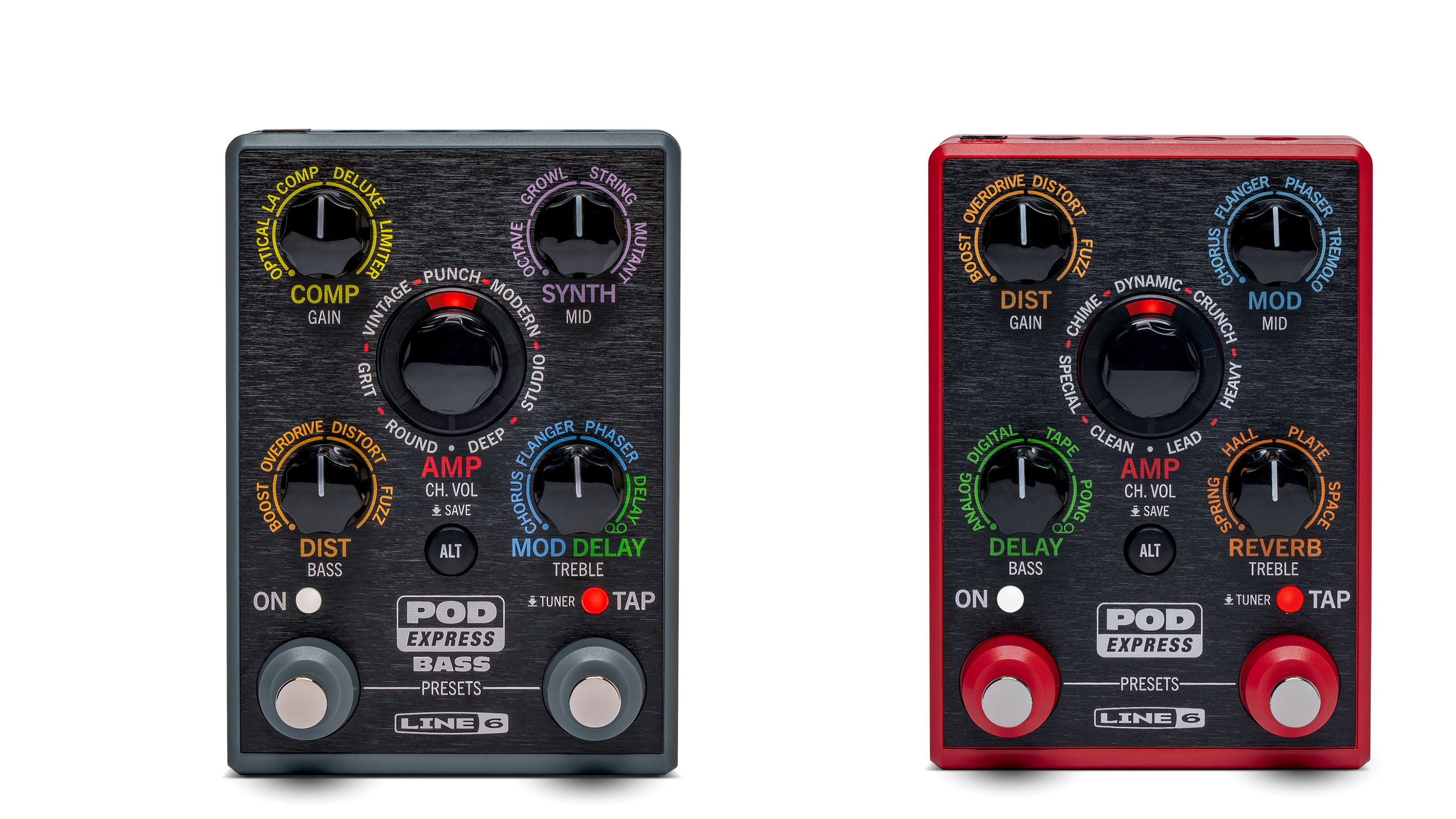
Neither POD Express has any kind of screen, but the accessible five rotary controls and two footswitches feel like Line 6 just wants you to get in and dial up your sounds quickly.
Both units feature seven amps, seven cabs, and 17 effects. There's a looper, tuner, tap tempo, noise gate, headphone output and USB C for recording. The stereo outputs are a welcome addition for live use. Two footswitches can be also be connected – plus an expression pedal – to select presets and turn effects on and off.
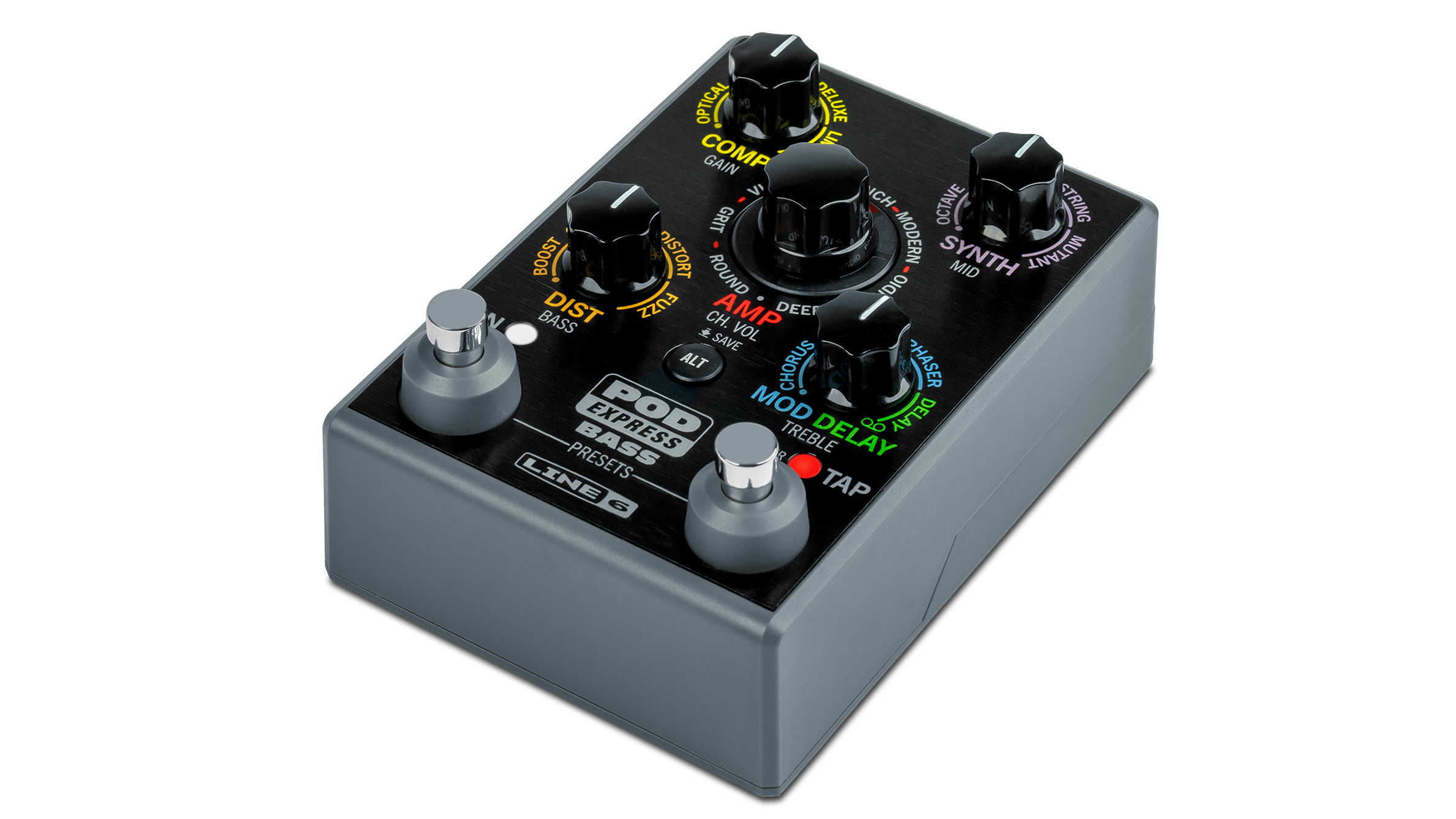
Looking in more detail at the POD Express Bass, its amp models include Grit, Vintage, Punch, Modern, Round, Deep and Studio. Effects include a Distortion section with Boost, Overdrive, Disort and Fuzz. A Synth section has Octave, Growl, String and Mutant.
A Compression section is replete with Optical, LA, Deluxe and Limiter options, while both the Modulation and Delay settings share a rotary selector. Here you get Chorus, Flanger, Phaser and tape Delay. All five control knobs double up to do other things, so the amp selector also changes channel volume, while the other four handles Gain, Bass, Mid and Treble. All very neat.
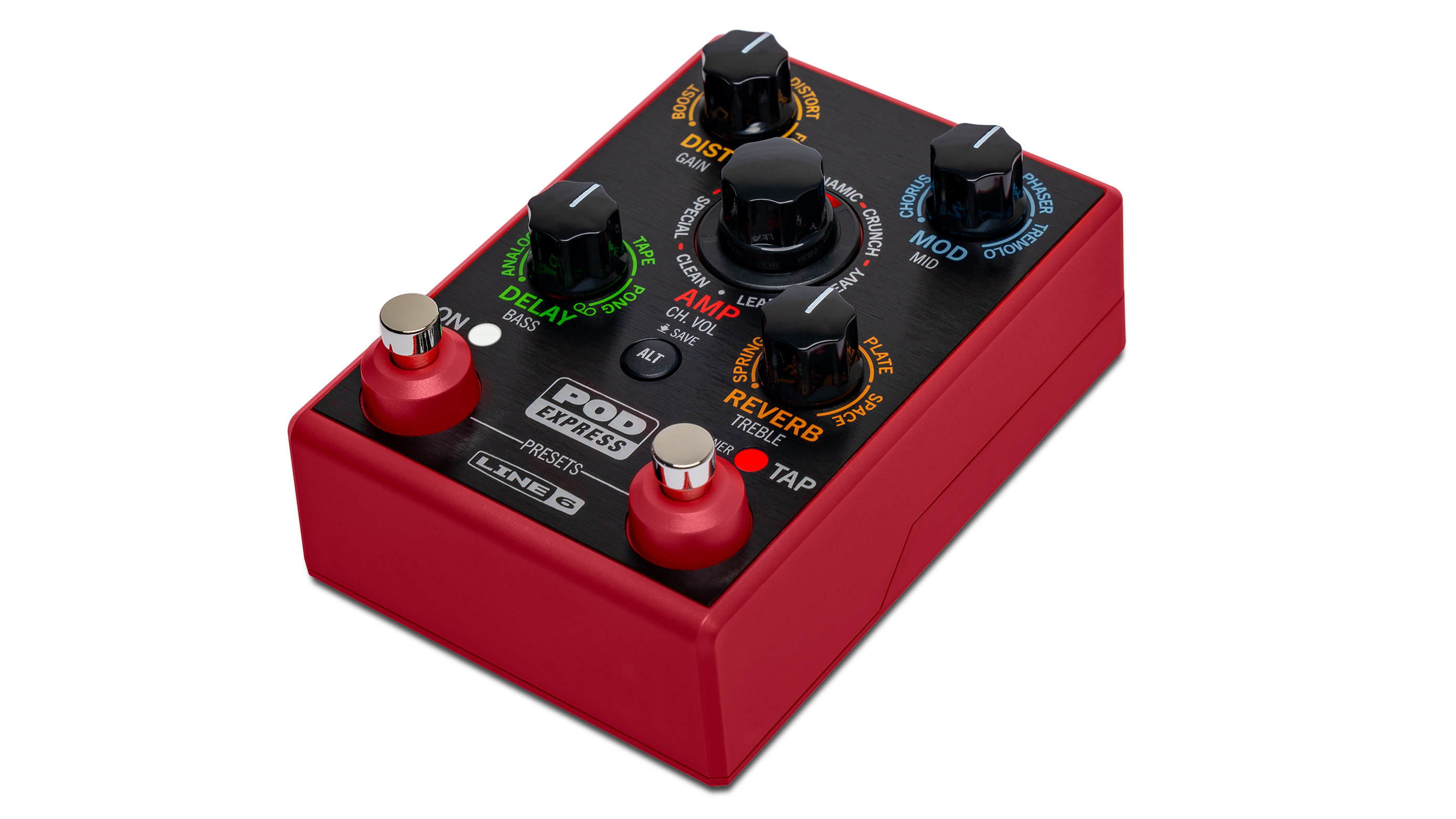
POD Express Guitar lacks the compression section so Reverb and Delay get their own designated areas with more models. Delay has Analog, Digital, Tape and Pong settings; Reverb has Spring, Hall, Plate and Space types.
The Modulation section offers Chorus, Flanger, Phaser, Tremolo, and finally Distortion has Boost, Overdrive, Distortion and Fuzz.
Both units deliver 9-volt power or from 3 AAA batteries (included) so buskers rejoice. The $179 / £190 prices we're seeing at Sweetwater and Thomann are also attractive for players looking for a portable tone base. In addition, Sweewater is offering bundles on the Bass and Guitar POD Express including an expression pedal and 9V power supply.
There's more info on both pedals from Line6's website.
Blammo Electronics Skronk Machine
Skronk Machine from Blammo Electronics is essentially an updated Zonk Machine making it a more user- and-pedalboard friendly. The original John Hornby Skewes Zonk Machine was produced for a short period between 1965 and ’66, yet became something of a legend in the world of fuzzboxes.
JHS actually has two of its own versions out, a Vintage Series with the larger wedge-style enclosure, and one in its Compact Series, but Blammo says its is unique in that it has modern flourishes as well as being an homage to the original.
Skronk Machine is designed in a small housing, with jacks at the top – good news for people with overcrowded pedal ‘boards. It has a no-click relay switch with both momentary and latching modes, and it recalls the last setting on power up.
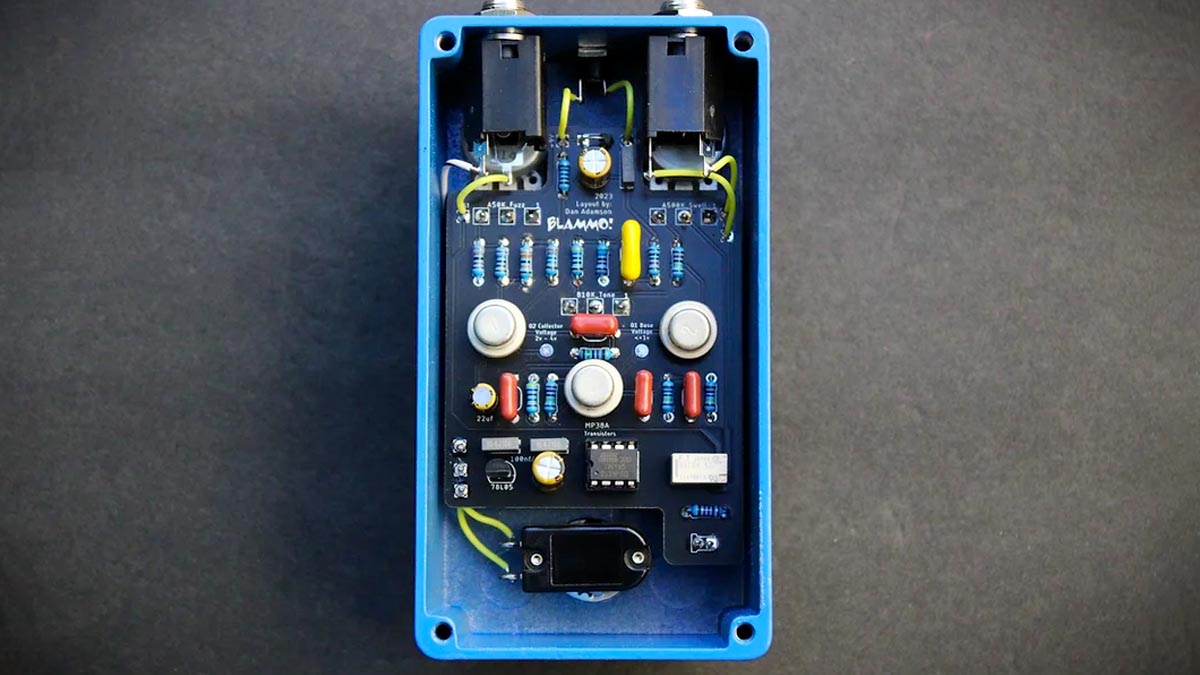
The original Zonk Machine was a famously bright fuzz, which gave it part of its charm but could be seen as a little uncompromising, depending on how bright your electric guitar was. So one thing Blammo has added is a passive tone control to roll some of that top-end out.
The unit also features NOS germanium MP38a transistors, which are said to handle power better. Finally, the pedal is true bypass and a blue LED illuminates when it is active. And just like the original, it looks pretty cool.
Skronk Machine costs $169 and is available now. Check the Blammo Electronics website for more details.
SolidGoldFX Aurras Optical Vibraphase
If you like your sound to er towards the psychedelic, and who doesn't, then the Aurras Optical Vibraphase from SolidGoldFX could be right up your swirly street. It's an asymmetric 2-stage optical phaser pedal, with a wide range of heady modulated sounds, from vibrato to Uni-Vibe.
Aurras – that's the goddess of sound, btw – passes your electric guitar’s signal through an analogue signal path, with dual LFOs applied to your signal via two opto-isolators.
It is designed to keep the signal clean and to give players complete control over their tone via a comprehensive set of controls like tap tempo and speed ramping. There's also an option to hook up an external expression pedal for more control.
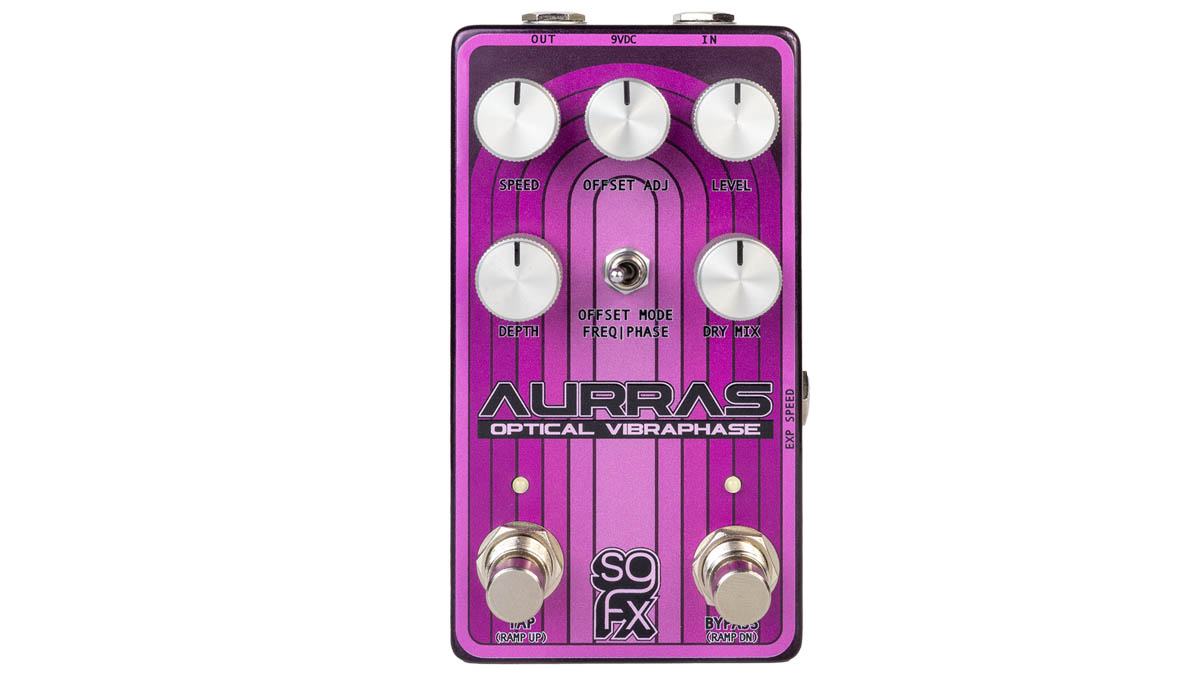
The two independent LFOs allows deep modulation, particularly via the Frequency Offset feature. That slows down one LFO and allows you to adjust the asymmetry between the LFOs via the Offset Adj dial. This gives you different rhythmic patterns for your modulation, greatly expanding sonic flexibility.
Set the rate of the LFO with the tap-tempo switch, or increase the speed to double the original LFO rate by holding the tap-tempo switch down. You can go completely off road by holding down the tap-tempo until the rate doubles, then press and hold it again to double it once more.
A bypass footswitch performs a similar but opposite trick; hold it down to ramp down the LFO rate, cutting it in two, and then in half again. The results are often out there, but you get a more conventional phase-shifting sound with both LFOs working in unison.
Aurras has soft-relay switches with jacks on the top of the pedal. It is true bypass and takes 9V DC from a pedalboard power supply. Aurras Optical Vibraphase is priced £189 / $209 and available now. See SolidGoldFX for more info.
Looking for more great new gear? Get all our round-up, news, features, tutorials, tips and more at our Gear Expo hub page.
Andy has been writing about music production and technology for 30 years having started out on Music Technology magazine back in 1992. He has edited the magazines Future Music, Keyboard Review, MusicTech and Computer Music, which he helped launch back in 1998. He owns way too many synthesizers.
“A fully playable electro-mechanical synth voice that tracks the pitch of your playing in real time”: Gamechanger Audio unveils the Motor Pedal – a real synth pedal with a “multi-modal gas pedal”
“Instead of labouring over a perfect recreation, we decided to make an expanded counterpart”: Chase Bliss teams up with Mike Piera for Analog Man collab based on the legendary King Of Tone












